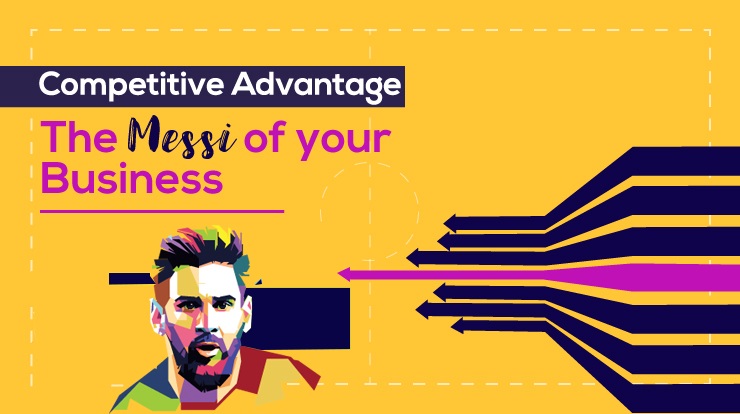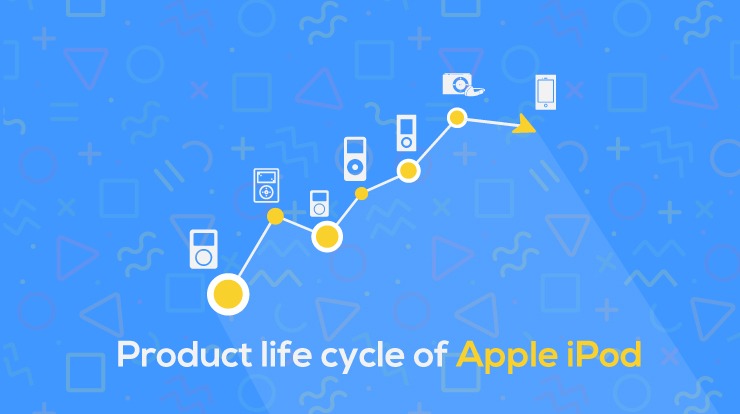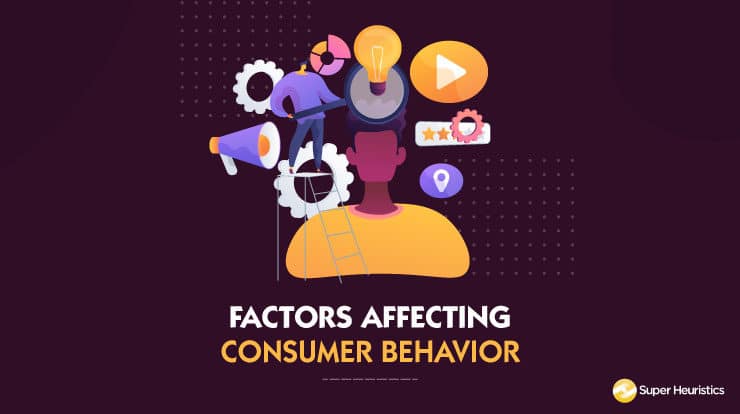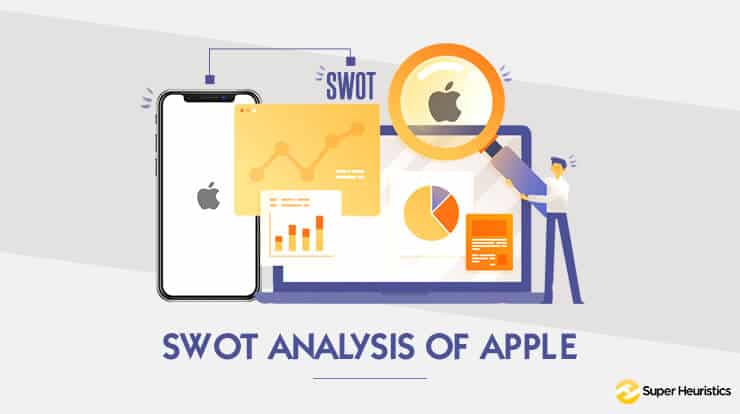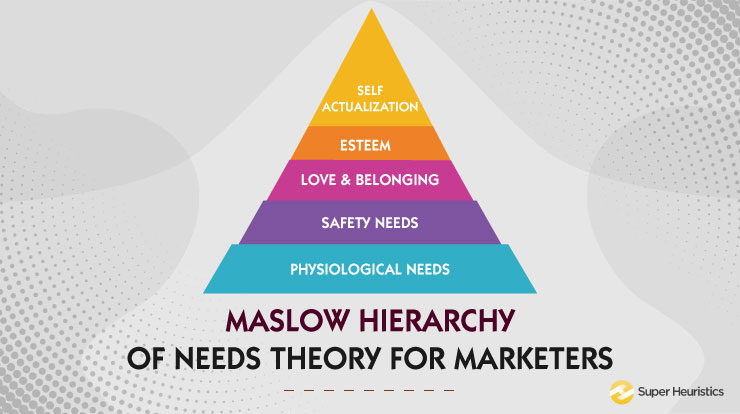
It is fun to know that psychology and business have a very strong connection. One such theory built on this bridge was the Maslow Hierarchy of Needs Theory.
Remember the times of the lockdown? Four dreaded or rejuvenating (for some) months of staying trapped in the walls of your homes. Do you remember some of the things that you didn’t stop or I must say couldn’t stop buying in those abnormal times?
I bet 500 bucks if your list would have gone anywhere apart from groceries and medicines. What was the reason behind leaving behind your lavish lives apart from supply chain disruptions that lead to this behaviour?
I have indulged you in a lot of riddles so let’s begin finding answers to all these aspects of consumer behaviour in the Maslow Need Hierarchy Theory.
What is Maslow Hierarchy of Needs Theory?
One of the most astonishing theories in psychology depicted by a simple triangle with 5 layers is the Maslow Hierarchy of Needs Theory.
Developed in the 1940’s by a Jewish psychologist Abraham Maslow, Maslow’s pyramid has been used by businesses across the world to understand Consumer Behaviour.
The theory argues that a human being has a series of needs, some of which have to be attended to at first and the others follow suit. Certain needs are more pressing, they cannot be overlooked at any point of time. The other needs have been acquired overtime living in the society.

Let’s have a look at the classification of Maslow Hierarchy of Needs Theory.
Physiological Needs
At the base of the pyramid lies the most basic needs for human existence. These are known as the physiological needs.
All of us are aware of the famous Hindi phrase- “Roti, Kapda aur Makan”. If you understand that, then you get me when I say that physiological needs are the ones that are the pillars of human existence.
Physiological needs comprise of basic needs such as the need for water, food, shelter, warmth, sleep which are the gamut of the most instinctive needs any human being has.
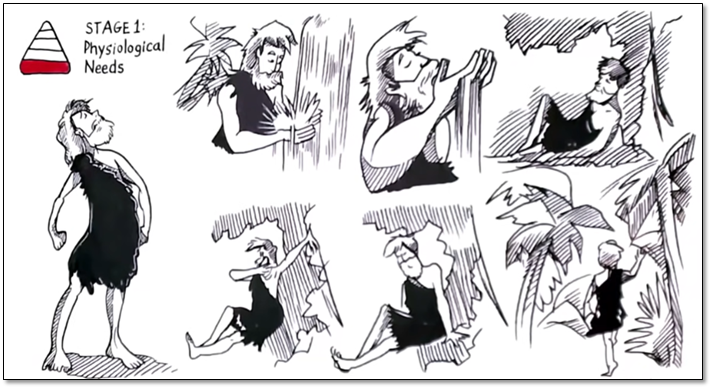
Source: Youtube.com
One thing to note about physiological needs is until these needs are met, a human does not climb other levels of Maslow theory of motivation.
Safety Needs
Once the physiological needs are met, humans tread to the next level in the Maslow hierarchy of needs pyramid.
Safety needs arise from a need for safe environment. Once we have some basic and financial resources, we use these to build a safe environment for us to protect us from danger.
People tend to seek control and order in their lives. Some of the basic security needs include Financial Needs, Health and Wellness and safety against accidents and Injury.
I think it will be easy for you to understand that until your set of basic needs comprising of Physiological and Safety needs are met, it is impossible for you to think about any other kind of need.
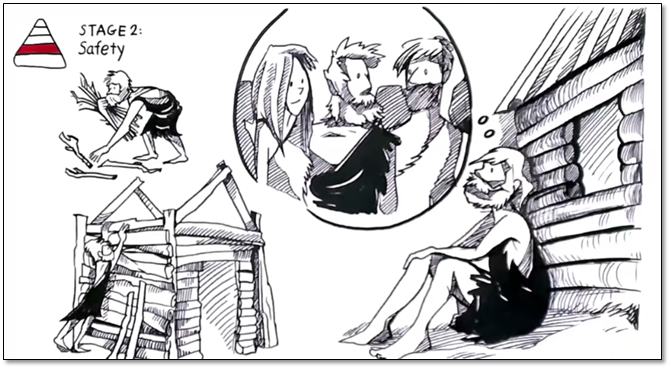
Source: Youtube.com
Love and Belonging or Social Needs
The next need in the Maslow hierarchy of needs is the need for love and belonging. Aristotle had very well quoted that “Man is by nature a Social animal”.
This need drives interpersonal relationships and are met through pleasing and fulfilling relationships with others.
Your desire to be near friends and family, be a part of a society, have your own gang, meet the love of your life, all belong to the gamut of social needs.
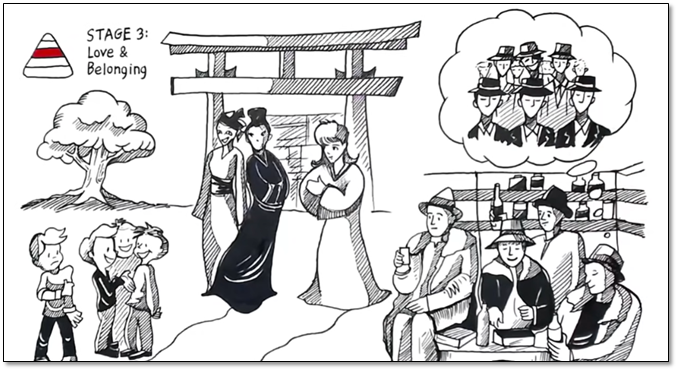
Source: Youtube.com
Need for Self-Esteem
Maslow characterised the need for self-esteem into two categories:
- The need for self (dignity, achievement, independence)
- The desire from reputation and respect from others (Status and Prestige)
When the needs at the bottom of the pyramid have been met, the need for self-esteem starts to play a very important role in motivating behaviour.
Participating in activities, academic or work accomplishments, athletic participation, hobbies followed passionately are all examples of fulfilment of the need of self-esteem.
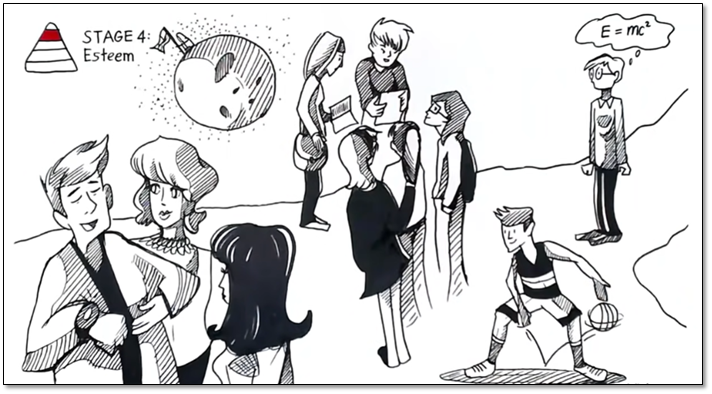
Source: youtube.com
Self-Actualisation
Self-actualisation is the ultimate point in Maslow hierarchy of needs theory.
It is the sense of fulfilment and satisfaction in true sense. One thing peculiar to this need is that it can mean different things to different people. For someone, getting to the top most position in an aspirational company would be satisfying and to someone else, living in the mountains having just enough to live a healthy and happy life would be fulfilment.
If you ask me, I am the second type.
But the irony is, self-actualisation is rarely achieved. I could go on and on about this but the thing here is this need is very close to someone’s aspirations.
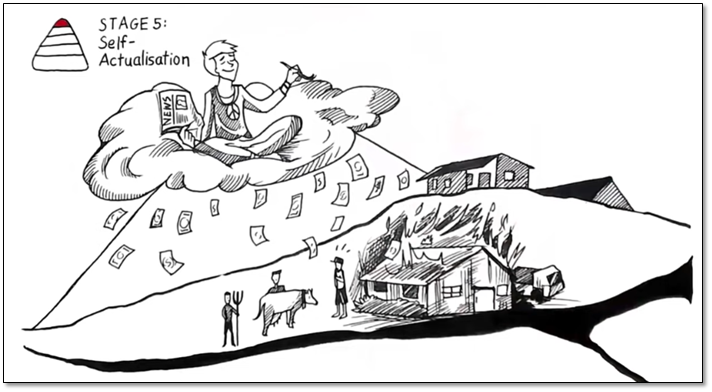
Source: Youtube.com
Maslow hierarchy of needs theory was actually propounded by a lot of researchers further. After years of studies, it has been modified into a theory with 8 layers. Let’s check out what are the newer additions made to Maslow’s Pyramid.

Source: thepeakperformancecenter.com
Cognitive Needs
They stand for the need for information, knowledge and understanding. This need instils curiosity and inquisitiveness in humans. This is a very important tier that has been added in the modified pyramid.
If you see, if the cognitive needs are in any way hindered, then the desire for all other needs goes for a toss. For e.g.; a person who wants to fend food for himself has to know how to source that food from the environment.
Aesthetic Needs
This need is for the search of beauty, appreciation, balance and form. It is again a basis for self-actualisation because if someone is unable to appreciate the beauty of things, then moving to self-actualisation ids extremely difficult.
Transcendence Needs
Transcendence is a very spiritual level of needs. It means to help others to attain their need of self-actualisation.

I think, till now you must have related to all the needs that I mentioned earlier and understood the chronology and importance of each of these in Maslow hierarchy of needs theory.
But what sense does it make for us marketers? You will be surprised to find the intervention of this theory in various marketing decisions. Let’s find out!
Maslow Hierarchy of Needs Theory for Marketers
For brands and marketers, Maslow hierarchy of needs theory can mean two things. One it motivates how a product or service will serve the various needs of the customer.
Secondly, the various needs help shape up the communication that brands indulge in while coming up with their promotional campaigns.
Maslow Hierarchy of Needs Examples in Action
We will take examples of brands and try to understand the application of this theory in real life.
Physiological Needs: Interesting Case of Oxygen Bars in New Delhi
Though in the area of working with physiological needs of the consumers, there is little that marketers can do.
But Thanks, and No Thanks to the pollution in Delhi, marketers and businesses got an opportunity to present their take on satisfying physiological needs.

Source: Source: oxypure.org
Who could think that a day will arise, that too so soon, that we would want to sit in bars and suck in oxygen by paying hefty sums of money?
But Kudos, to the marketing minds who saw an opportunity to cater to a physiological need for fresh air arising due to the increased pollution.
Safety Needs: Airtel Safe Pay
Have you seen the recent Airtel Safe pay ads? Relate it to the safety needs we discussed sometime back.
The need for financial safety arose from the increasing frauds happening all around us. And Airtel hit just where it was needed.
They introduced the concept of a second OTP on the Airtel safe pay interface with the details of the transaction about to take place and it goes straight to the owner of the account. If it’s not a valid transaction, you have the power to make it null and void.

Source: airtel.in
Social Needs: KFC’s Friendship Bucket
Remember KFC’s ad for their Friendship Bucket. It’s a great example of how the need for love and bonding is used to appeal to the customer.
Self-Esteem Needs: Dove’s Real Beauty Campaign
This was a massively successful campaign by Dove in order to encourage every woman to love themselves in their own skin. It drove the internet crazy and sales increased from 2.5 Billion to 4 Billion in a period of 10 years.
After the results from a survey conducted amongst women were received, only 2% of the women surveyed that they found themselves Beautiful.
Dove designed and dedicated their campaign to drive out this sense of inferiority and instil self-esteem in women throughout the world.

Source: wordpress.com
Self-Actualization Needs- Incredible Indian Army Ad Campaign
Indian Army had rolled out an ad campaign some years back in order to recruit more Indian youngsters. The punchline of the ad campaign goes something like this:
“Live a life less ordinary”
I couldn’t find a better example for a marketing strategy aiming to target self-actualisation needs.
The focus on the sense of fulfilment is very evident because what better satisfaction to proudly serve one’s own country and countrymen.
Do watch this ad and you will feel that rush of adrenaline for sure!
I have thoroughly enjoyed exploring how Maslow hierarchy of needs theory could be put to use by marketers in order to target different needs of their potential customers.
Afterall, Theories mean nothing until put to action!
Conclusion
- Maslow hierarchy of needs theory is a motivational theory that governs consumer behaviour
- It can be broken down into primarily five types of needs: Physiological needs, Safety needs, need for love and Bonding, Need for Self-Esteem and Self-Actualisation needs.
- Researchers later modifies it to include 3 more types of needs which are Cognitive needs, Needs for aesthetics and Transcendence.

